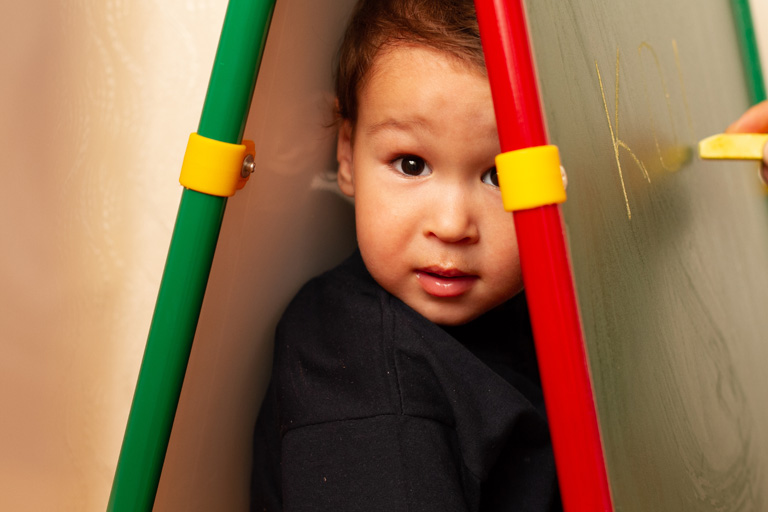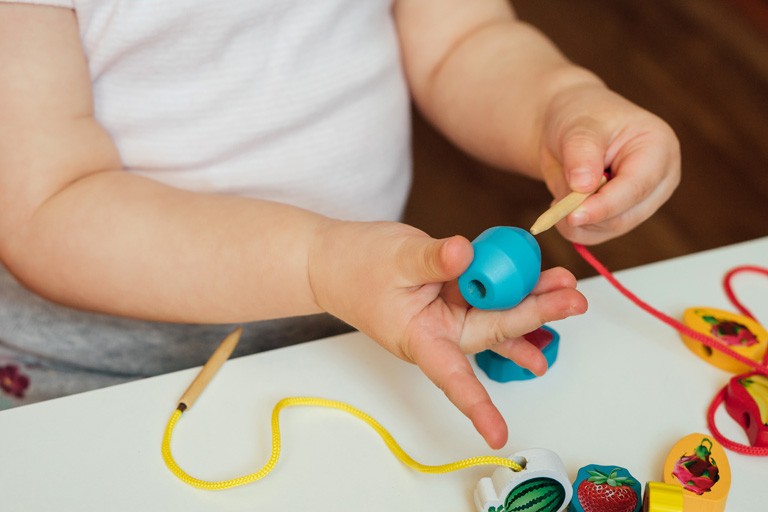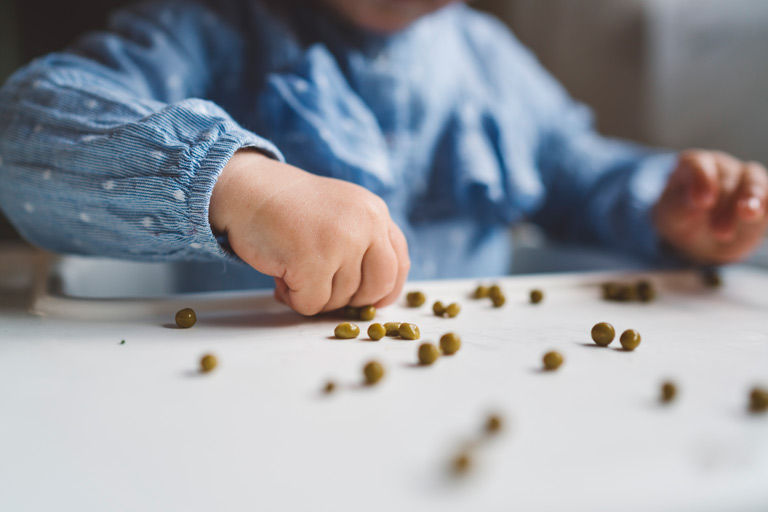Fun Activities That Help Your Child With Special Needs To Grow
May 7, 2018Helpful Positioning Tips for your Newborn Baby
June 7, 2018By Tamara Guo, M.Ed TEIS Developmental Specialist
Did you just receive that horrifying phone call from your toddler’s day care teacher informing you that “Hailey bit two children today”? Or worse yet, get the call from the center director telling you that if Hailey doesn’t stop biting other children she will be soon dismissed from the program?
As a parent you are mortified, embarrassed and worried about what the other parents will say and worse yet that your child will be labeled a “biter”. Rest assured, you are NOT alone. Biting is a very typical toddler behavior. Yes, you heard me, biting is typical! It is not an atypical behavior unless it continues past age three and as many as 50% or more of toddlers do bite. Why, you ask…why do they bite???
There can be a variety of reasons as to why a toddler begins to bite, among these are frustration, anger, tiredness, hunger, teething, sensory needs, feeling over-crowded or overwhelmed and a lack of expressive language.
What alarms me as an early intervention developmental specialist is how many child care teachers do not know that biting is typical (especially IN child care centers) and how to handle it. We get quite a few referrals to early intervention for toddlers who bite, giving them a label of having “problem behavior”, however, as I said previously, biting is typical and not atypical behavior for toddlers and biting alone does not qualify a child for early intervention services. Biting is troublesome for child care teachers, but it does not mean a child has a problem behavior, not should children who bite be labeled as “bad”. Yes, biting is unacceptable, as is hitting, kicking, pinching and spitting…again, behaviors that toddlers will exhibit at times, but just because a behavior is unacceptable does not mean the child doing it is inherently “bad”. Yes, not all toddlers bite, but probably more do than don’t, so what can we do about it?
First we have to get to the root of why the child is biting. This requires keen observation from caregivers and parents across settings and across time. So it may help child care staff to assign one person to monitor or shadow the biter so they can recognize just when, where, and who this child is biting. Having a child care teacher or aid shadow a child also means they can intervene and teach valuable lessons before a bite occurs. Many children bite because another child is too close to them in their physical space and it’s simply a way to get that child out of their physical space. Other children bite because they are angry or frustrated that another child took their toy or they simply want a toy that another child has and biting gets them what they want without using words-the other child drops the toy once he is bitten. Adults often put way too much thought into toddler’s biting, thinking that these little peanuts are biting to purposely hurt someone or to be malicious and that is usually not the case. Biting most simply often gets the child what he wants-it can get him a toy, get him out of doing something he doesn’t want to do or get him excess attention. Toddlers don’t care whether attention is positive or negative and so if they bite and everyone in the classroom room looks at them and causes a scene and scolds them and yells…guess what? Wow, that bite got a big reaction from the adults didn’t it? They are going to surely bite again! When a biter gets a lot of attention for biting he feels in control and powerful!
So here’s a review of what to consider first:
- Where does the biting occur? Home, child care, playground, etc?
- Who does the child usually bite? Same child, different children, only Mom or particular teacher?
- When does the biting occur? Certain time of day? Is child hungry or tired?
- Is child teething? Is child always mouthing toys (especially past 18 months a child may have oral sensory needs)?
Now, once you have the above sorted out, next it’s time to see what happens before the child bites.
- Was the child told no?
- Was the child frustrated with a toy?
- Was the child upset that someone took his toy?
- Was the child wanting a toy that another child had?
And lastly, what happens immediately after the child has bitten someone?
- Did the child get the toy he wanted?
- Did the child get out of doing something he didn’t want to do (escape)?
- Did the child receive excess attention for biting either by being yelled at, singled out, put in time out?
Remember that ALL behavior, including biting, is a form of communication. So little ones who often lack the language to say things such as “Hey, you’re too close to me” or “Hey, you took my toy and I’m mad” or “Give me that toy, I want a turn” will sometime result to biting to communicate these wants, needs or frustrations.
So what can we as adults do to teach toddlers that biting is an unacceptable form of communication?
- First, we can begin to lavish praise on our toddlers whenever they are demonstrating appropriate behaviors during play, such as saying “please” to take a turn, or asking a teacher for help when someone snatches a toy. Teach them that they get attention for behaving well, rather than for biting.
- Next, we can be sure not to use punishment or time out to deal with biting. To extinguish biting behaviors we want to give the biter as little attention as possible and focus and lavish our attention instead on the child who got bitten. So if Hailey bites Jack, we immediately remove Hailey from the immediate area, but not to time out, just out of the immediate scene and calmly and firmly (but not angrily) say “No, bite. Biting hurts”. And then immediately focus the adult attention on Jack, reinforcing “Poor Jack, Hailey bit you because she wanted your toy. I know biting hurts. We’ll wash your boo boo and get you a band aid.”
- You can gently reinforce later to the biter things such as “Biting hurts, you made Jack cry”. or “I know you wanted the dog, but Jack was playing with it.” or “Next time you need to use your words and say “My turn” to Jack”.
- You can role play scenarios with toddlers using stuffed toys or dolls and create scenarios where biting typically occurs and then model what the toddler can do instead of biting next time.
- There are several books available for toddlers that deal with biting such as “Teeth Are Not For Biting” by Elizabeth Verdick and “No Biting” by Karen Katz.
- Toddlers do really well with visuals so creating lessons on what teeth ARE for can be helpful. Talking about how our teeth chew food and how we brush our teeth, and that teeth are for smiling not hurting etc.
For many children, once biting is not getting them excess attention, they will decrease and stop biting behaviors. Most children grow out of biting by age three. If the child who is doing the biting seems to have excess oral-sensory needs or does not have adequate expressive language skills for his age or if biting is coupled with other challenging behaviors (especially across locations-home, school, church, playground) these would be reasons to refer a child for an early intervention evaluation. However, most children who bite are typically developing and with the adults handling the situation the same way at home and school, the biting behavior should subside without special interventions needed.
The main thing we do not advocate for biters is biting a child back! This will only teach a child that biting is OK, not the other way around. Also “sorry” for most toddlers is an empty word. Empathy is not often a skill toddler’s possess at their age. Making a child say “sorry” to another toddler doesn’t necessarily mean they will feel sorry or even recognize they hurt the other child.
So, in summary, as frustrating and embarrassing as it is to be told your child is a “biter” you are not alone and with swift and knowledgeable intervention by adults at home and child care, your child should learn fairly quickly that biting is not acceptable and the behavior should disappear fairly quickly.
Want to learn more about toddler behavior? You can read a previous blog on tips for taming tantrums here.

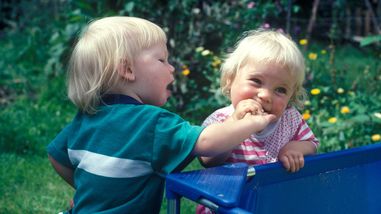
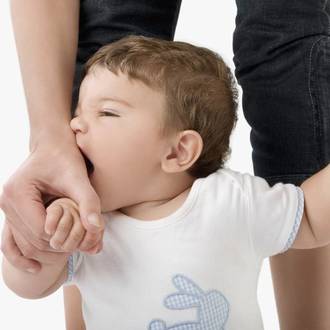

 Send to a friend!
Send to a friend!
